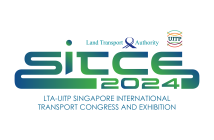
New Zealand is punching well above its weight in the vital telecommunications sector, according to a recent assessment.
The Telecommunications Forum’s (TCF) New Zealand Telecommunications – Enabling New Zealand’s future report notes that:
- investment in the sector is currently $1.7billion per annum, the second-highest out of all OECD countries
- New Zealand is showing the fastest fibre uptake in the world, with a 250 per cent increase in total fibre connections in 2014
- and has one of the fastest 4G mobile download speeds globally.
Prices for mobile services fell significantly between 2012 and 2014, with New Zealanders experiencing the second-largest price decline on average across the OECD – a 46 per cent reduction during that period.
The report also concluded the ICT sector is considered one of the most innovative in New Zealand, and provides a range of services that are increasingly competitive on both price and quality compared to other countries.
TCF CEO Geoff Thorn says the report provides great endorsement for the industry – and a chance to explain the bigger picture. “There’s been phenomenal change in the last few years,” he notes. “As consumers, we expect fast, ubiquitous connectivity to get on with our digitally-connected lives, the same way we expect running water and power.”
He believes the report shows the sector is doing a “stellar” job dealing with enormous and increasing user demand while marching towards the government’s ambitious targets for Ultra-Fast Broadband (UFB) and the Rural Broadband Initiative (RBI)
The UFB initiative is to provide faster, better Internet to at least 99 per cent of the population by 2025 with download speeds of at least 100Mbps, while the RBI will combine wireless towers, rural cabinets and fibre to ensure more than 90 per cent of users outside UFB areas can enjoy broadband Internet with minimum peak speeds of 5Mbps and up to 50Mbps.
“The reality is we now have a superior telecommunication infrastructure performing far beyond many of our OECD competitors,” says Thorn. “Unprecedented levels of industry investment, collaboration and innovation are genuinely making a difference to our country.”
New Zealanders are savvy Internet users with the equal highest number of smartphone banking users in the OECD in 2013, as well as joint leaders in the ability to find information on local businesses or services using a smartphone.
New Zealand had the fastest fibre uptake in the developed world in 2013-2014 and was also ranked as a heavy user of mobile devices for purchasing goods online, tied seventh across the OECD.
More than 1 in 10 people now claim streaming over the Internet is their main way of watching TV – a figure that has doubled in the past year and brings the country into line with Australia and the UK.
Mobile calling minutes continue to rise despite the availability of over-the-top VOIP (Voice over Internet Protocols) calling on mobiles, exceeding 10 per cent year-on-year growth, while mobile data usage patterns are growing fast at 64 per cent compound annual growth rate.
Other key points in the report include:
- the ICT’s sector contribution was higher than any other OECD country, including New Zealand’s 10 main OECD export competitors, in two periods: 2001 to 2007; and 2008 to 2013
- an MBIE report on ICT showed the sector accounts for $3.09 billion of gross domestic product, growing at an annual pace of 9.3 per cent between 2008 and 2013
- a 2012 study into the social and economic impacts of UFB and RBI for New Zealand showed that the economic activity generated from building UFB and RBI will grow GDP by $5.5bn over 20 years – a $1.37 GDP impact for every $1 invested.
The latter study, by Alcatel Lucent’s research arm, Bell Labs, indicated that over 20 years up to $33bn will be saved from doing things more efficiently and effectively online in several key areas including:
- healthcare: more video-conferencing between doctors, specialists and patients, resulting in faster access to physicians, faster delivery of care and remote diagnostics. These changes will reduce emergency room visits, hospital admission, the need for tests and the costs of long-term prescription drugs. Estimated savings = $6bn.
- education: technology in classrooms improving learning, lowering costs and giving learners and teachers access to national resources such as Te Papa as faster more consistent broadband speeds enable better video-conferencing. Estimated savings = $3bn.
- business: improved productivity, lower travel costs, greater flexibility for people to work from home, lower network and communication expenses, and savings from putting applications into the cloud. Estimated savings = $14bn.
- agriculture: savings from broadband applications that improve milk solid production – applications such as online farm management and herd management tools and automated farm data collection and analysis tools. Estimated savings = $9bn.
The sector is ensuring that New Zealand will meet this future demand with a continued roll-out of 4G mobile data networks, huge investments in fibre driving uptake to the fastest in the OECD, core optical transport network and local network upgrades and an additional trans-Tasman cable.
This article appeared in the February issue of Asia Pacific Infrastructure News.



